Alfons Kemper
Adaptive Semantic Prompt Caching with VectorQ
Feb 06, 2025Abstract:Semantic prompt caches reduce the latency and cost of large language model (LLM) inference by reusing cached LLM-generated responses for semantically similar prompts. Vector similarity metrics assign a numerical score to quantify the similarity between an embedded prompt and its nearest neighbor in the cache. Existing systems rely on a static threshold to classify whether the similarity score is sufficiently high to result in a cache hit. We show that this one-size-fits-all threshold is insufficient across different prompts. We propose VectorQ, a framework to learn embedding-specific threshold regions that adapt to the complexity and uncertainty of an embedding. Through evaluations on a combination of four diverse datasets, we show that VectorQ consistently outperforms state-of-the-art systems across all static thresholds, achieving up to 12x increases in cache hit rate and error rate reductions up to 92%.
The Duck's Brain: Training and Inference of Neural Networks in Modern Database Engines
Dec 28, 2023Abstract:Although database systems perform well in data access and manipulation, their relational model hinders data scientists from formulating machine learning algorithms in SQL. Nevertheless, we argue that modern database systems perform well for machine learning algorithms expressed in relational algebra. To overcome the barrier of the relational model, this paper shows how to transform data into a relational representation for training neural networks in SQL: We first describe building blocks for data transformation, model training and inference in SQL-92 and their counterparts using an extended array data type. Then, we compare the implementation for model training and inference using array data types to the one using a relational representation in SQL-92 only. The evaluation in terms of runtime and memory consumption proves the suitability of modern database systems for matrix algebra, although specialised array data types perform better than matrices in relational representation.
The Case for Learned Spatial Indexes
Aug 24, 2020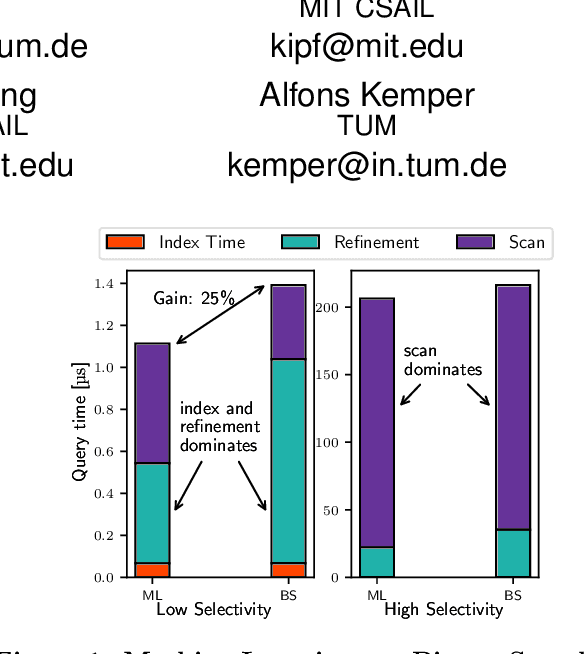



Abstract:Spatial data is ubiquitous. Massive amounts of data are generated every day from billions of GPS-enabled devices such as cell phones, cars, sensors, and various consumer-based applications such as Uber, Tinder, location-tagged posts in Facebook, Twitter, Instagram, etc. This exponential growth in spatial data has led the research community to focus on building systems and applications that can process spatial data efficiently. In the meantime, recent research has introduced learned index structures. In this work, we use techniques proposed from a state-of-the art learned multi-dimensional index structure (namely, Flood) and apply them to five classical multi-dimensional indexes to be able to answer spatial range queries. By tuning each partitioning technique for optimal performance, we show that (i) machine learned search within a partition is faster by 11.79\% to 39.51\% than binary search when using filtering on one dimension, (ii) the bottleneck for tree structures is index lookup, which could potentially be improved by linearizing the indexed partitions (iii) filtering on one dimension and refining using machine learned indexes is 1.23x to 1.83x times faster than closest competitor which filters on two dimensions, and (iv) learned indexes can have a significant impact on the performance of low selectivity queries while being less effective under higher selectivities.
RadixSpline: A Single-Pass Learned Index
May 22, 2020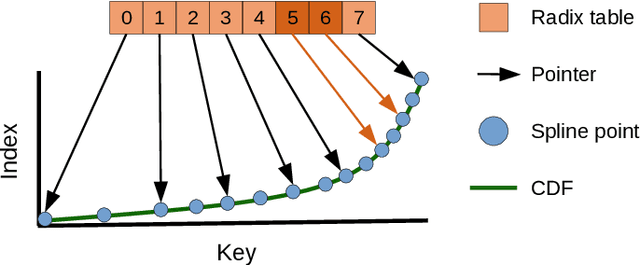
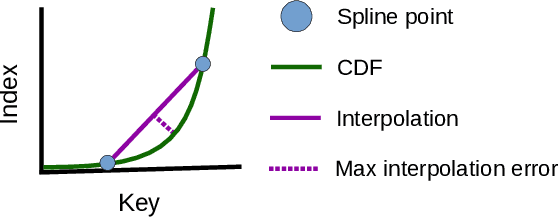


Abstract:Recent research has shown that learned models can outperform state-of-the-art index structures in size and lookup performance. While this is a very promising result, existing learned structures are often cumbersome to implement and are slow to build. In fact, most approaches that we are aware of require multiple training passes over the data. We introduce RadixSpline (RS), a learned index that can be built in a single pass over the data and is competitive with state-of-the-art learned index models, like RMI, in size and lookup performance. We evaluate RS using the SOSD benchmark and show that it achieves competitive results on all datasets, despite the fact that it only has two parameters.
SOSD: A Benchmark for Learned Indexes
Nov 29, 2019
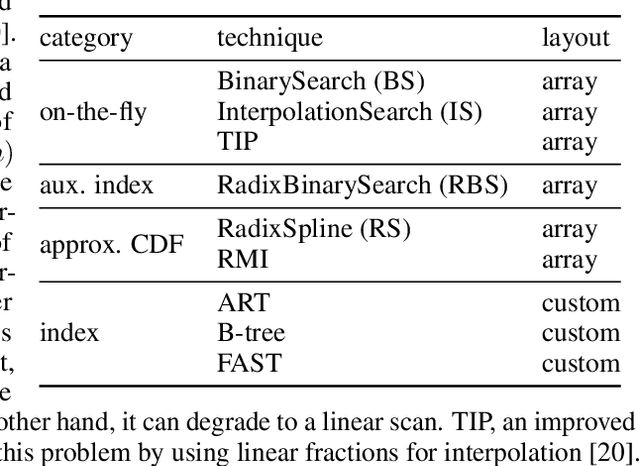
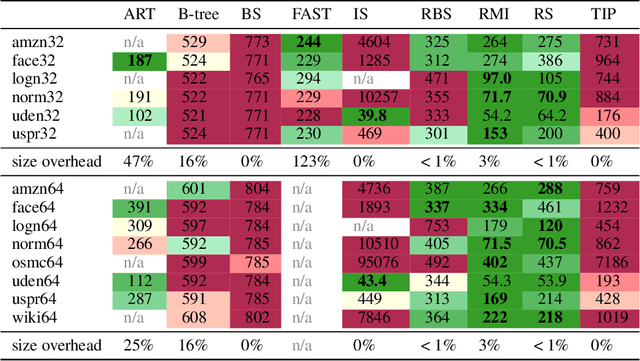
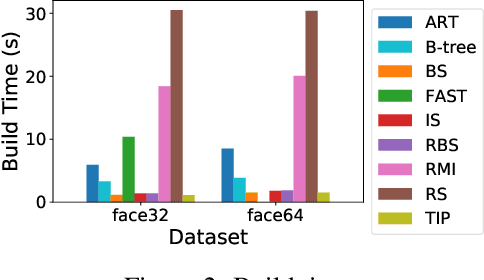
Abstract:A groundswell of recent work has focused on improving data management systems with learned components. Specifically, work on learned index structures has proposed replacing traditional index structures, such as B-trees, with learned models. Given the decades of research committed to improving index structures, there is significant skepticism about whether learned indexes actually outperform state-of-the-art implementations of traditional structures on real-world data. To answer this question, we propose a new benchmarking framework that comes with a variety of real-world datasets and baseline implementations to compare against. We also show preliminary results for selected index structures, and find that learned models indeed often outperform state-of-the-art implementations, and are therefore a promising direction for future research.
 Add to Chrome
Add to Chrome Add to Firefox
Add to Firefox Add to Edge
Add to Edge